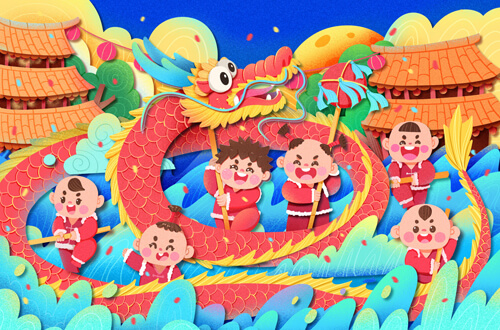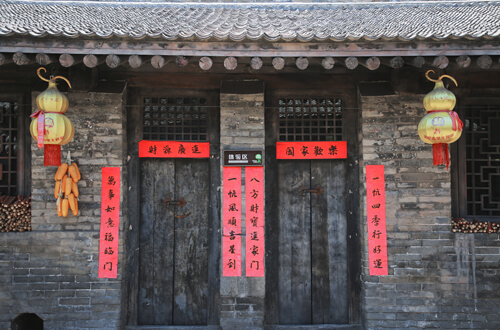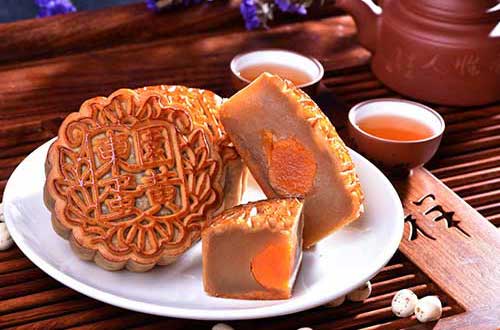Dancing with Dragons: The Thrilling Performance of the Dragon Dance in China

Unlike western dragons, Chinese dragons are frequently depicted as long, serpentine creatures with vibrant colors, resembling a combination of different animal features such as scales of a carp, body of a serpent, claws of an eagle, and antlers of a deer. Dragons hold significant cultural importance in Chinese culture, symbolizing positive attributes such as luck and goodness. The Dragon Kings in Chinese culture are believed to have the ability to manipulate the weather and control the tides. They are seen as powerful and authoritative figures, capable of bringing both blessings and calamities upon the waters and the people who rely on them. In ancient China, people relied on rainfall for agricultural production, leading them to offer sacrifices to dragons in spring as a prayer for good fortune. Many believed that dragons could safeguard their lands and crops from flood damage.

Contrary to Chinese beliefs, Western stories often portrayed dragons as menacing and malevolent creatures, resembling lizards with sharp teeth and large wings. In contrast, traditional Chinese dragons resemble long, snake-like creatures with sharp claws.
Dragon worship eventually developed into the dragon dance, a popular performance seen during various celebrations today. The dragon dance costume is typically crafted using materials like grass, bamboo, paper, and cloth. To evoke auspiciousness, the dragon's joints are often made in odd numbers, resulting in 9-jointed, 11-jointed, or even 29-jointed dragons. The dragon's body is meticulously woven from thin bamboo strips or other materials, forming a circular shape and covered with a vibrant red cloth.
In the dragon dance, the performers manipulate the dragon using poles to control its movements. The lead dancers skillfully raise, lower, dip, thrust, and sweep the dragon's head, creating an engaging visual spectacle.
To ensure smooth coordination, all dancers within the dragon must work together to move its body in perfect synchronization with the rhythmic beats of the accompanying drum.
In certain variations of the dance, the dragon may be seen chasing a ball mounted on a pole, known as the "Pearl of Wisdom." This represents the dragon's pursuit of insight and knowledge, symbolizing the search for enlightenment.
The Origins of Dragon Dance
Tracing its origins to the Han dynasty (206 BCE–220 CE), the traditional dragon dance began as a ceremony for worshiping ancestors and praying for rain. It later became more of an entertainment, often performed during Lantern Festival, Mid-autumn Festival and Chinese New Year. In Chinese culture, dragons symbolize wisdom, power, dignity, fertility, and auspiciousness, and have also become a symbol of Chinese culture itself. Odd numbers of the dragon’s joints are regarded as auspicious, so people often make an odd-numbered jointed dragon puppet. Right before the dance, the head and the tail of the dragon are connected to its body. Then, someone holding a rod with a large ball at the top leads the dragon during the dance. As the dragon follows the ball’s movement—left and right, back and forth, up and down, and thus moving in waves—it appears to be dancing.
The Structure of the Dragon Used in Dragon Dance
The structure of the dragon used in the Dragon Dance is typically composed of several key components. These components include the dragon's head, body, tail, and various accessories.
The dragon's head is usually the most elaborate and eye-catching part, often made of lightweight materials such as paper mache or fabric stretched over a frame. It is meticulously crafted with intricate details, such as fierce-looking eyes, sharp teeth, and a moving mouth to add a dynamic element to the performance.

The body of the dragon is formed by a long, flexible frame made of bamboo or other lightweight materials. This frame is typically covered with vibrant colored fabric or scales, and multiple sections are connected to give the dragon its snake-like appearance.
The length of the dragon's body varies depending on the region and style of the Dragon Dance. It can range from a few meters to several tens of meters long. The body may be further adorned with patterns, symbols, or cultural motifs that hold significance to the community performing the dance.
At the end of the dragon is the tail, which is usually made of lightweight materials like fabric or feathers. The tail often features colorful patterns or designs to enhance the visual appeal of the performance. Additionally, there may be attachments like ribbons or streamers to create dynamic movements as the dragon twists and turns during the dance.
In some Dragon Dance performances, additional accessories are incorporated. These can include the dragon's whiskers, which are typically made of horsehair or other thin fibers, and the dragon's horns or antlers, which are often made of lightweight materials like plastic or fabric. These accessories further contribute to the overall majestic and mythical appearance of the dragon used in the dance.
Different Styles of Dragon Dances All Over China
1. Hong Kong Fire Dragon Dance
The Tai Hang Fire Dragon Dance, designated as part of China's national Intangible Cultural Heritage list in 2011, has been a tradition since 1880. Originating in Tai Hang, which was once a coastal fishing village but is now situated inland due to land reclamation, the dance holds a significant historical background. According to legend, when the Hakka community faced a devastating plague, a soothsayer advised the villagers to perform a dragon dance accompanied by firecrackers and incense to ward off the epidemic. Even today, the Fire Dragon Dance remains a prominent feature of the Mid-Autumn Festival, carrying on the revered heritage of Tai Hang.
2. Foshan Human Dragon Dance

The Human Dragon, also known as "Ren Long" in Chinese, is a traditional dragon dance where individuals come together to form the shape of a dragon. In the village of Guanghua, located in Xingtan Town near Guangzhou in Southern China, this dance is performed by a group of dozens to over a hundred participants, creating a dragon that stretches for tens of meters. The Human Dragon consists of two main parts: the base and the body. The individual in the base position needs to have the strength to support the weight of the body on their shoulders and waist. Meanwhile, those in the body section wave red ribbons to symbolize the dragon's mythical claws. The dance involves a body performer riding on the shoulders of a base performer and then lying back on the shoulders of another base performer positioned behind them.
The Human Dragon is further complemented by its distinct head and tail. The head is formed by three individuals: one holds the dragon horns, sitting on the shoulders of another performer, while a third person's feet grip the waist of the second performer. The third individual leans forward, suspending their upper body in the air to represent the dragon's tongue. As for the tail, there are two variations. A tail performer can either hold their palms together high above their head to create the illusion of a tail or they can hold tail props, sitting on the shoulders of the base performer and leaning back with their back supported by the head of the base performer.
Every Spring Festival, the residents of Guanghua Village eagerly gather in the central square, arriving early to secure a prime viewing location for the captivating Human Dragon Dance performance. The participants of the dance team dress meticulously in vibrant red and yellow attire, harmonizing perfectly with the resounding rhythm of the accompanying gongs and drums. They skillfully execute their intricate and dazzling dance moves, captivating the audience with their captivating performance.
3. The Wooden-Stool Dragon Dance
The Wooden-Stool Dragon Dance gets its name from the unique method of constructing the dragon itself, which involves connecting dozens of wooden stools to form three distinct parts: the head, body, and tail. Each household contributes one stool, which they decorate with various artistic elements such as paintings, paper-cuts, and calligraphy. Once joined together, these stools transform into a magnificent dragon. This traditional dance takes place on the 15th day of the first lunar month, with performers synchronizing their movements to the rhythmic beat of drums, cymbals, and gongs. For evening performances, the festivities are accompanied by the sounds of firecrackers. As the dancers begin their routine, the immense dragon, adorned with numerous colorful lanterns, illuminates the festive atmosphere, captivating and energizing the audience. The Wooden-Stool Dragon Dance bears immense cultural and historical significance, reflecting the local customs, history, as well as the intricate craftsmanship of folk arts, making it a cherished cultural heritage.
4. Straw Dragon Dance
In rural Shanghai’s Songjiang District, local residents craft straw dragons using glutinous rice straw and perform with them during festive events, such as the Mid-Autumn Festival. These straw dragons can reach impressive lengths of up to 20 meters and require the collaborative efforts of nine dancers positioned at 2-meter intervals to provide stability. The traditional straw dragon dance comprises seven distinct sections, each symbolizing elements like praying for rain, the gathering of clouds, the descent of rain, and the manifestation of the dragon god. A well-executed performance hinges on impeccable timing and seamless coordination among the dancers. At the height of the dance, eight village girls emerge, gracefully sprinkling water over the audience, symbolizing a blessing for a prosperous harvest. The tradition of the Straw Dragon Dance is prevalent in numerous locations across southern China.

OR
Are you eager to begin your Chinese cultural journey?
Drop us a line and we will promptly connect you with our leading China expert!
 Chinese Lion Dance
Chinese Lion Dance  Spring Festival Couplets
Spring Festival Couplets  Chinese Music
Chinese Music  Mid-Autumn Festival
Mid-Autumn Festival